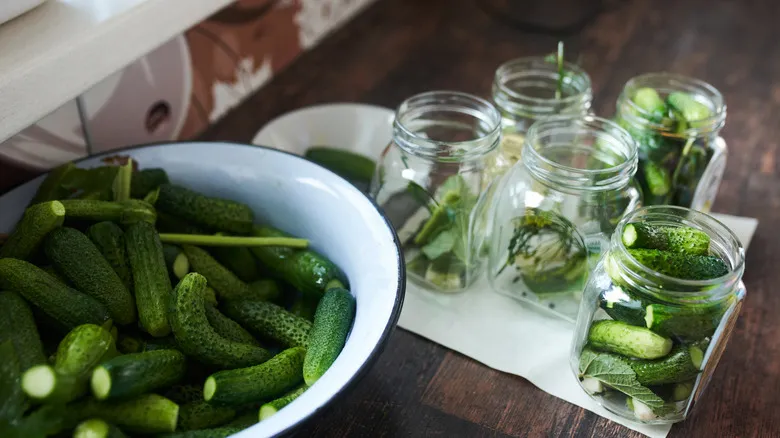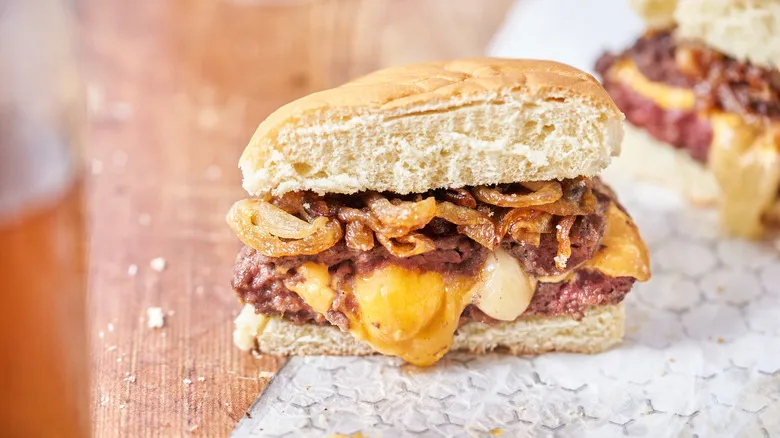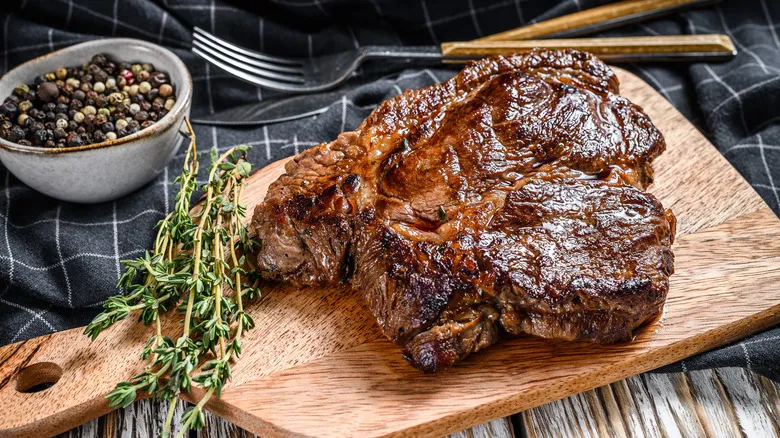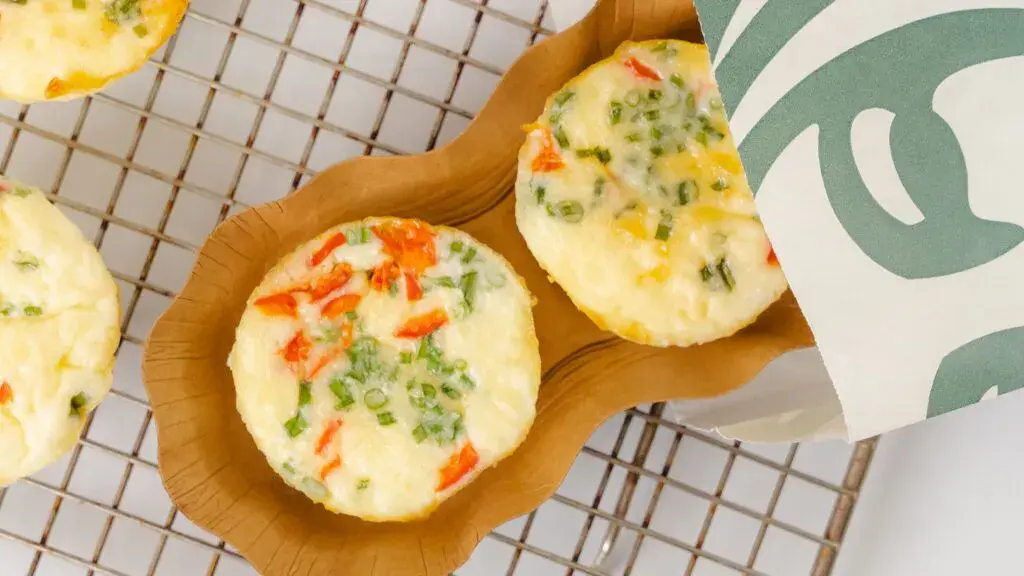Bye, bye blossom
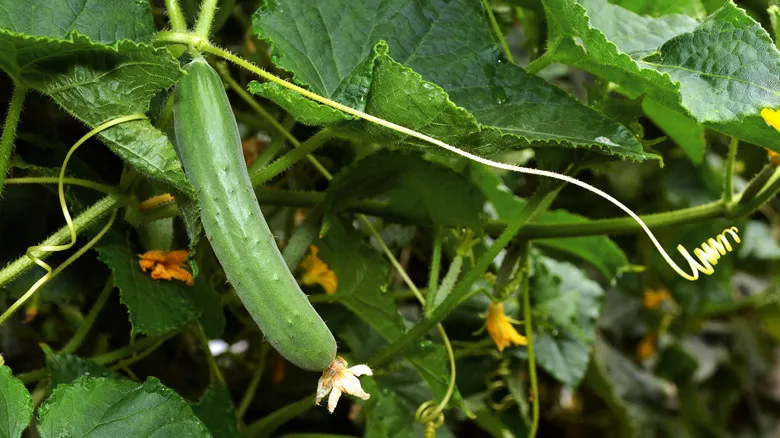
Throughout the life cycle of a cucumber, vibrant yellow flowers emerge from the plant. In many varieties, the male flowers appear first, followed closely by the female flowers. When the female flower blooms, a small, pale green cucumber can be seen at its base. This stage occurs just days before the cucumber matures into a deep green, ready for harvest.
If you're not growing your own vegetables and are relying on the market for your pickling needs, it may be a bit tricky to identify which end of the cucumber is the blossom end. To determine which end of the gherkin to trim, take a close look at the cucumber. The blossom end will appear rough and raised, while the stem end will be smooth. To ensure your pickles remain crisp and avoid any mushiness, simply cut off a small portion of the blossom end before seasoning, brining, sealing, and storing. Additionally, that bright yellow flower is edible, much like the summer zucchini blossoms you may have encountered in fried fritter recipes.
Recommended
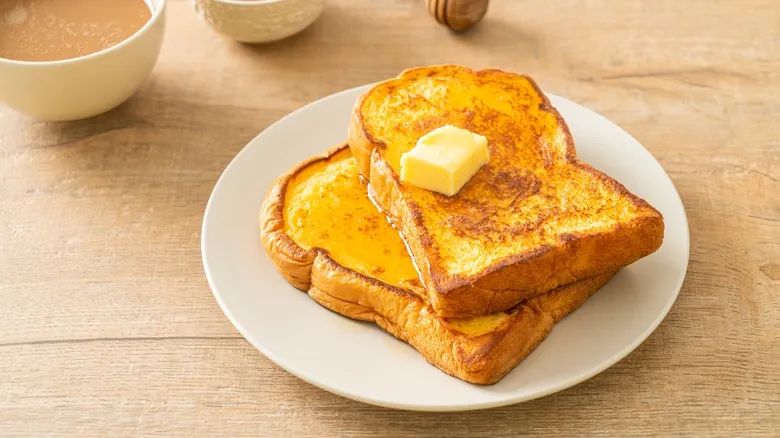
For Better French Toast, Dry Bread Is Your Friend
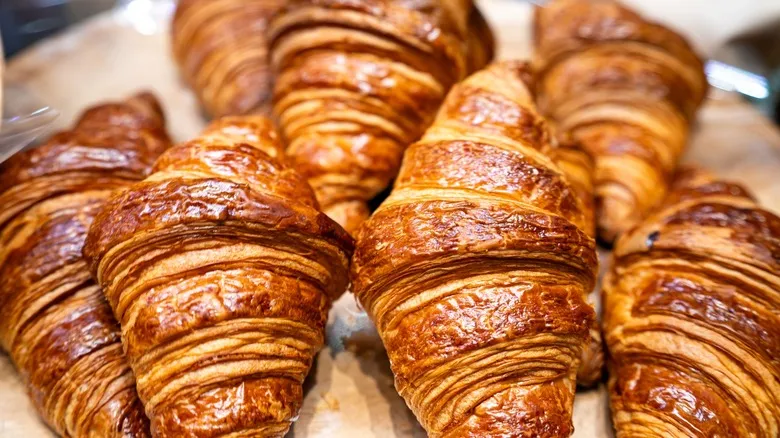
Stale Croissants Are A Huge Win For Your Salad — Here's Why

Why You Should Always Keep Pasta Water In Your Fridge
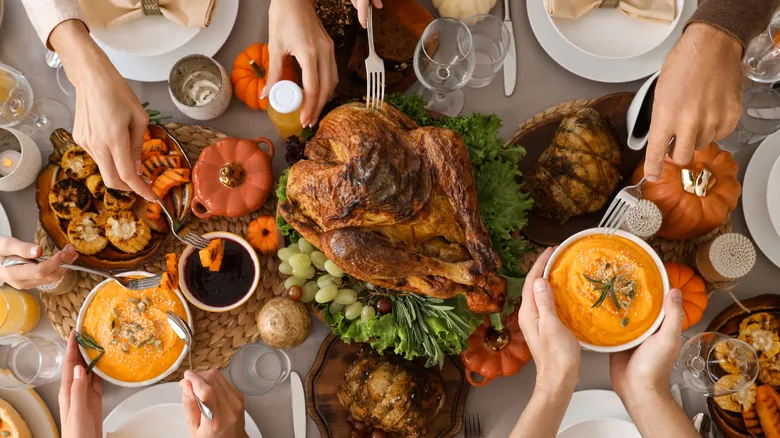
How To Properly Store Leftover Thanksgiving Turkey
Next up

